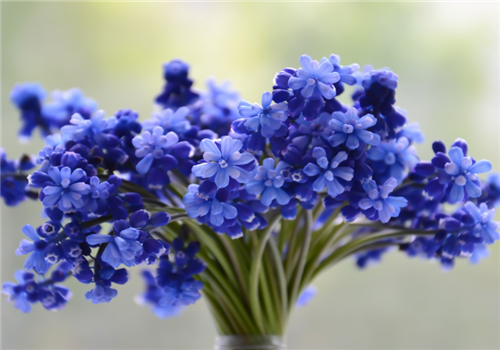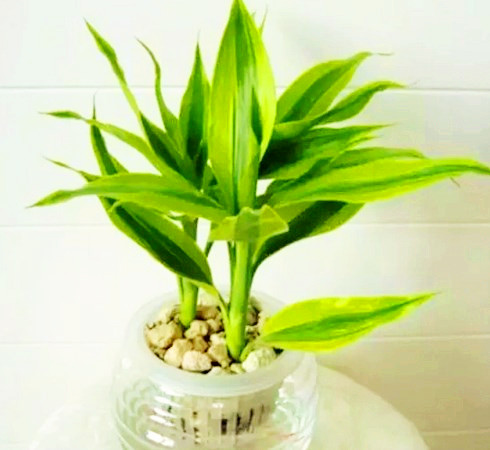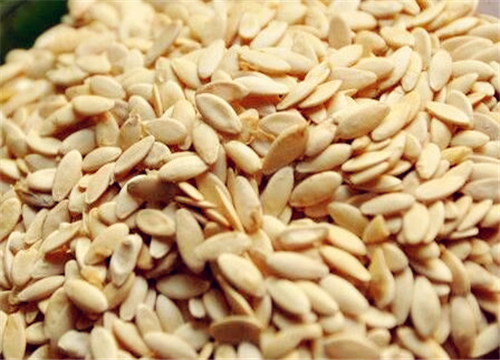How to raise hyacinth (daffodils)? Is it poisonous?
Hyacinth, also known as Narcissus, is a perennial herb, its flowers and colors are bright and varied and its aroma is fresh and elegant, and the plant type is of high ornamental value, so how to raise hyacinth? Is it poisonous?
First, how to raise hyacinth?
1. Seed ball disinfection: before hyacinth planting, it is recommended that we first disinfect and sterilize the bulbs to prevent decay, eradicate the dry epidermis and old seeds, and soak them in potassium permanganate solution (the concentration is light purple red) for a quarter of an hour. Invade and disinfect. After disinfecting the seed ball, dry the water in the seed ball and dry it naturally for a day.
2. Bulb planting: hyacinth has been differentiated due to the flower bud of the bulb, and the base fertilizer can be used in the planting process. When the seed bulb is planted in the basin soil, the height of the soil should be 2 cm to cover the highest point of the seed bulb. if there is no experience in planting the bulb, it is suggested that it is appropriate to expose the soil at the top of the bulb (mainly to prevent excessive watering from causing stem rot. I suggest you use the latter) and pour the basin water thoroughly after planting.
3. Pre-maintenance: hyacinth can be planted in an environment of no more than 10 degrees to promote root germination, the whole root germination period is about 20-30 days (depending on the ambient temperature). In the watering link, to achieve dry and thorough watering, remember not to water at will, you can weigh the weight of the flowerpot to determine the degree of dryness and wetness.
4. late maintenance: hyacinth sprouting can appropriately increase the temperature of the growth environment to shorten the time needed for flowering, and the growth temperature should be controlled at about 15-20 degrees. Below 10 degrees, the growth is relatively slow, but does not have much effect on growth, higher than 25 degrees is easy to produce blind flower phenomenon (flower bud growth is not good can not blossom). Usually can lengthen the sunshine time, the sunshine is more, then the plant is relatively short, the plant type is beautiful. Under normal maintenance, it takes about 30 days from budding to flowering. If the ambient temperature is high, the flowering is relatively early.
5. Flowering maintenance: the flowering period of hyacinth is about 10-15 days, and if the environmental temperature is low, the flowering period is relatively long. After flowering, it can be moved into the room to watch, and a certain amount of light can be given every day to prevent the leaves and stems from growing steeply.
6. post-anthesis treatment: after hyacinth flower fade, the residual flowers can be removed and nitrogen fertilizer (cake fertilizer) can be applied once every two weeks in daily management to promote the development of corms in the soil, and the quality of bulbs will directly affect the reflowering in the coming year. After the advent of summer, the leaves will gradually wither and yellow, and the amount of water can be gradually reduced. After the bulb enters dormancy, water is completely banned and placed in a cool place (less than 30 degrees, too high temperature is disadvantageous to the formation of flower buds).
7, precautions: hyacinth planting process must be dry soil before watering, so as to avoid excessive moisture corm rot.

Second, is hyacinth poisonous?
It is actually a flower with a small amount of toxin, the flower is not poisonous, but the pollen produced can cause allergic reactions in people who are overly sensitive to pollen. Its flowers have a faint fragrance, but don't be fooled by its fragrance, because it can't be smelled for too long. Its bulb has a certain degree of toxicity, accidentally eating this kind of thing may cause stomachache, diarrhea, dizziness symptoms, if you eat too much, it may be life-threatening. If you have children or pets at home, you should pay more attention to the location to avoid accidents.
Can the hyacinth be put in the bedroom?
Hyacinth is generally not a big problem if it is not touched, but its pollen can spread in the air, which can easily lead to allergies. Aroma can affect people's sleep, if put in the bedroom, sleep at night when smelling too much aroma may lead to insomnia, so that the fresh air in the bedroom mixed, bringing adverse effects on the body. At the same time, try not to put it in the study, because it can easily affect the efficiency of reading and cause hypoxia in the brain. Therefore, do not put hyacinth in the bedroom, you can choose other flowers for display.
Time: 2019-03-13 Click:
- Prev

"Popular indoor plants" Fugui bamboo hydroponic cultivation methods and precautions introduced!
Bamboo is also known as Kaiyun bamboo, which has the symbolic meaning of good luck and great benefit, so it is very popular with people. It is a kind of indoor ornamental plant with high popularity. Bamboo can be cultivated in soil or hydroponic culture, but it is usually cultivated in water in family culture.
- Next

When is the best time to plant cucumbers? Only in this way can planting management be high-yielding!
We all know that every summer there will be a large number of fresh cucumbers on the market, will be bought to make a variety of delicacies. If you choose to grow cucumbers in your home, you don't know when to grow cucumbers. How can high yield be achieved by planting management? The details are as follows: when is the best time to plant cucumbers?
Related
- Fuxing push coffee new agricultural production and marketing class: lack of small-scale processing plants
- Jujube rice field leisure farm deep ploughing Yilan for five years to create a space for organic food and play
- Nongyu Farm-A trial of organic papaya for brave women with advanced technology
- Four points for attention in the prevention and control of diseases and insect pests of edible fungi
- How to add nutrient solution to Edible Fungi
- Is there any good way to control edible fungus mites?
- Open Inoculation Technology of Edible Fungi
- Is there any clever way to use fertilizer for edible fungus in winter?
- What agents are used to kill the pathogens of edible fungi in the mushroom shed?
- Rapid drying of Edible Fungi

